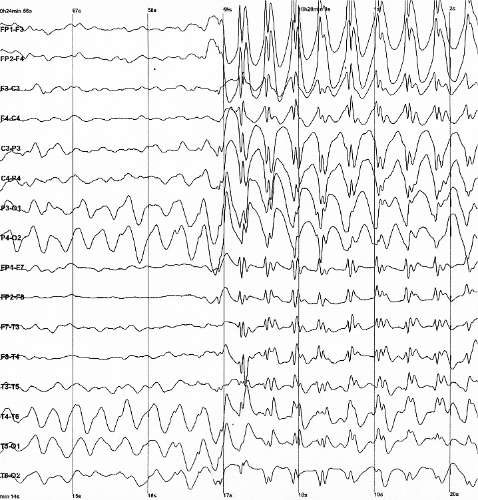Epileptic Encephalopathy, Early Infantile, 67

A number sign (#) is used with this entry because of evidence that early infantile epileptic encephalopathy-67 (EIEE67) is caused by heterozygous mutation in the CUX2 gene (610648) on chromosome 12q23.
For a general phenotypic description and a discussion of genetic heterogeneity of EIEE, see EIEE1 (308350).
Clinical FeaturesChatron et al. (2018) reported 6 patients with EIEE67 and reviewed 3 previously reported patients (Epi4K Consortium and Epilepsy Phenome/Genome Project, 2013, Rauch et al., 2012, Geisheker et al. (2017)). Seven patients had onset of seizures within the first 7 months of life. Seizure types varied, but included focal, myoclonic, absence and atypical absence, tonic, atonic, and generalized tonic-clonic. At onset, the seizures tended to be frequent with multiple seizures per day. EEG was abnormal in all individuals, most frequently showing generalized spike-wave or polyspike-wave patterns, but focal discharges, multifocal discharges, hypsarrhythmia, and focal slowing were observed in some patients. The seizures in most patients were refractory to medication. Two patients (patient 9, who was previously reported by Geisheker et al. (2017), and patient 5) had a somewhat milder seizure course, which Chatron et al. (2018) stated was more consistent with a developmental encephalopathy. Both were 14 years of age at the time of the report, and they had onset of absence seizures at 9 months and 12 years, respectively. Patient 5 had nonconvulsive status epilepticus and patient 9 was seizure free from age 12 years. Additional more variable features among all patients included developmental regression (2 patients), movement disorders, such as stereotypic movements, hand flapping, dyskinesia, and athetosis (5 patients), as well as autistic features (2 patients). Brain imaging was normal in 6 patients, but showed cerebellar atrophy, hippocampal asymmetry, and thin corpus callosum in 1 patient each. All patients had severe intellectual disability, and 7 were nonverbal.
Barington et al. (2018) reported a 17-year-old Danish girl who developed myoclonic and generalized seizures at 12 months of age. She had previously been noted to have delayed development with lack of eye contact and poor head control at age 6 months. She had moderate to severe intellectual disability and autism, absent language, hypersalivation, and chronic constipation. She also had delayed motor development with a rigid movement pattern, stereotypic movements, and toe-walking. Antiepileptic treatment resulted in the reduction of seizure frequency, and the treatment was discontinued at 13 years of age with only occasional relapses.
Molecular GeneticsIn 9 unrelated patients with EIEE67, Chatron et al. (2018) identified the same de novo heterozygous E590K mutation in the CUX2 gene (610648.0001). Three of the patients had previously been reported. The mutation was found by exome sequencing and was not found in the ExAC/gnomAD databases. Functional studies of the variant and studies of patient cells were not performed.
In a Danish girl with EIEE67, Barington et al. (2018) identified a de novo heterozygous E590K mutation in the CUX2 gene. The mutation was found by exome sequencing and confirmed by Sanger sequencing. Functional studies of the variant and studies of patient cells were not performed.